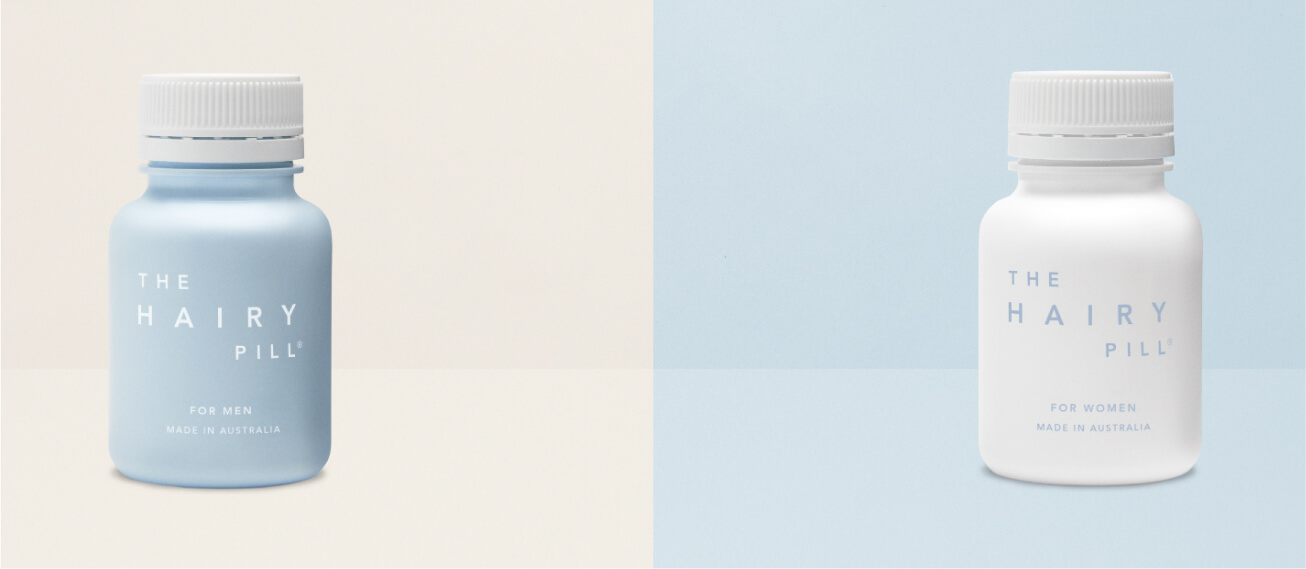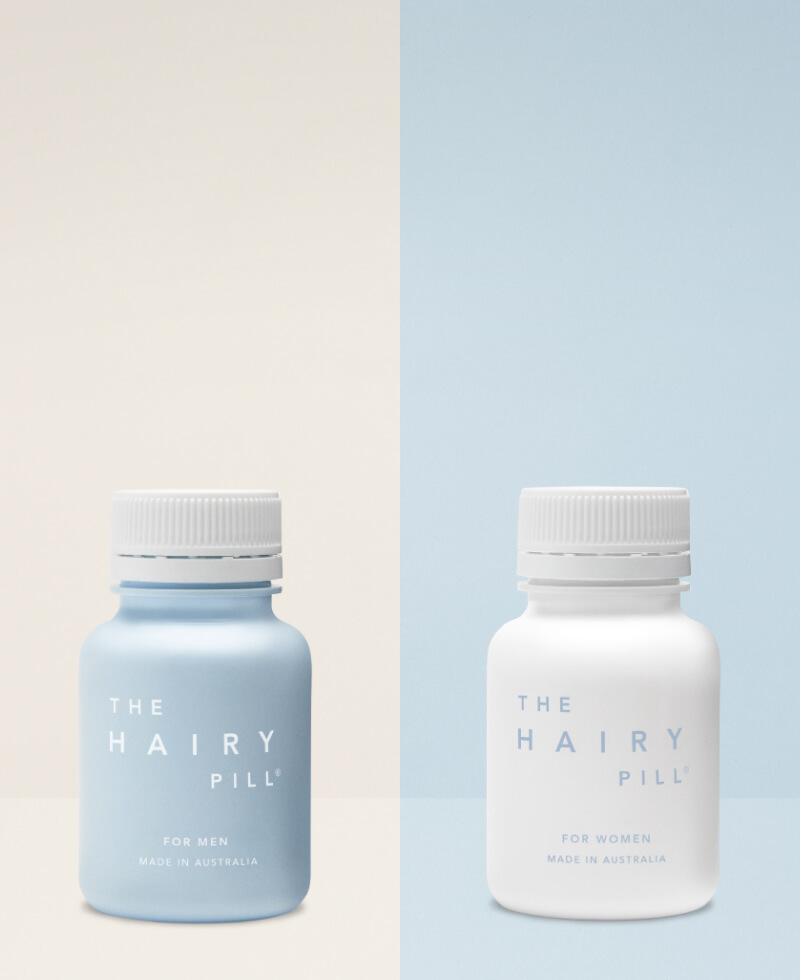Thinning hair is a hairy prospect. You might resist the idea or try to convince yourself that it’s all in your imagination — the thinner ponytail, the clogged shower drain.
Let’s put your mind at ease.
A certain level of hair loss is normal. Shedding anywhere between 50–100 hairs a day is a matter of routine.
But many women will, at some point in their lives, begin to lose more than that.
If that’s you, you’re certainly not alone.
Thinning hair and female hair loss is a natural experience for many women. You’ve joined the ranks of celebrities like Jada Pinkett Smith and Kristin Davis.
Even better, we’re starting to understand the science behind thinning hair in women — and to identify the most effective treatment options.
Read on to learn more about hair thinning in women. We’ll also show you how you can talk through your options with a doctor who specialises in women’s hair loss (all from the comfort of your couch).
Hair Loss in Women – The Science
There are many different reasons why you may be losing so much hair. It might be because of a new medication (including chemotherapy), a pregnancy, an iron deficiency, a major surgery, a thyroid disorder, or severe stress — to name just a few causes.
Many of these events trigger a type of hair shedding called telogen effluvium, a temporary condition that disrupts your hair growth cycle. With time, most women recover and their hair returns to normal.
But for many women, thinning hair is a result of a more permanent, genetic condition that often comes with age.
That’s right. With time, women lose hair just like men do.
It looks a little different. The stages of female hair loss usually start with diffuse thinning across the scalp and a widening of your centre part.
But it’s believed to be a result of the same cause as men’s hair loss — androgenetic alopecia. In females, we call it female pattern hair loss (FPHL).
60% of Australian women are predisposed to FPHL. While we don’t entirely understand why it happens to women, it is likely caused by the same androgen hormones responsible for male pattern baldness.
These hormones shrink genetically-sensitive hair follicles, which affects the follicles’ ability to produce healthy strands. Instead, we get short, fine hairs.
But the story doesn’t have to end there.
There are effective treatments for female hair loss. And the sooner you start, the more successful the results can be.
Discover if The Hairy Pill® is right for you.
Take our short hair health quiz and we will work out if The Hairy Pill® can help you and your hair.
Take the quizHow Do I Stop My Hair From Falling Out?
When it comes to other dermatological issues, such as eczema or acme, few people hesitate to find and start treatment ASAP.
But something happens with thinning hair and hair loss. We hope that it’s just a phase. That our hair will grow back on its own.
In some cases, it will.
But chances are you may need treatment to stop hair loss and stimulate regrowth. The treatment you take depends on the cause and severity of your hair loss.
Let’s take a look at the most common treatments. Some of them aim to stop your hair from falling out. Others help restore it to where it belongs — on your head. The best treatments do both.
But first, a note: In most cases, the effectiveness of your treatment depends on when you start. The earlier you begin, the greater your chances of maintaining healthy, thicker hair over the long term.
Minoxidil
Minoxidil is an oral prescription pill or an over-the-counter lotion that you apply directly to the scalp.
This medication is an ‘antihypertensive vasodilator’.
That means it relaxes and enlarges certain small blood vessels to facilitate blood flow — and thus the flow of nutrients and oxygen to your hair follicles.
It’s a common treatment for male hair loss but studies show that both oral minoxidil and topical minoxidil can be an effective treatment for female hair loss. That said, the level of success varies.
Women are generally given a lower dose of minoxidil than men, but you should still avoid the treatment if you are pregnant, planning to get pregnant, or breastfeeding.
Antiandrogens
There is a certain class of prescription medication that blocks the androgen hormones (like testosterone) that may be responsible for thinning hair in women.
These medications are called antiandrogens.
A 2005 study (by our own Dr Rodney Sinclair) and a 2020 study have both found antiandrogens to be an effective treatment for thinning hair in women.
There are several types of antiandrogens but the most common ones used for hair loss are finasteride and spironolactone.
They can be used alongside minoxidil but as with minoxidil, they should not be used if you are pregnant, planning to become pregnant, or breastfeeding.
Because of this, antiandrogen treatments for female hair loss are usually only prescribed to postmenopausal women.
Microneedling
This is a relatively new procedure that involves rolling hundreds of tiny needles over the skin. The process creates microscopic injuries that kickstart an immune response and stimulate hair follicles.
It’s often used in conjunction with topical minoxidil. One study found that microneedling — either alone or in conjunction with minoxidil — was more effective than minoxidil treatment alone.
Hair Transplant Surgery
Hair transplantation is a more drastic measure often taken in the later stages of hair loss where the patient has significant balding.
For this reason, it’s less common as a solution to female hair loss because women generally experience diffuse thinning across the whole scalp rather than defined areas of balding.
It’s a costly outpatient surgical procedure that involves removing small pieces of skin with healthy hair follicles from the back of the head and transplanting them in the bald areas.
Low Light Laser Therapy (LLLT)
Some dermatologists and skin specialists use low light laser therapy (LLLT) as a treatment for hereditary hair loss in women.
In this procedure, low-intensity light is applied to the scalp to reactivate the cells responsible for hair growth. Although it may be effective for treating hair loss, more studies are required to determine its long-term effectiveness.
Platelet-Rich Plasma (PRP) Injections
During this treatment, plasma is drawn from your blood and injected into the scalp to stimulate hair follicles. It is typically done over a series of treatments to stimulate hair growth.
As it’s a novel treatment, we need more research to determine its effectiveness for treating hair loss. However, preliminary studies suggest that it may have some success in helping to regrow hair.
Ready to start your hair growth journey?
- Free express shipping
- Unlimited doctor consultations
- Simple once a day treatment
How The Hairy Pill® Treats Hair Thinning In Women
Female hair loss can have some pretty devastating external symptoms. But when it comes to treatment, it’s usually what’s happening beneath the surface that matters.
The Hairy Pill® addresses the root of the problem. All science and no gimmicks, this personalised treatment may contain clinical grade actives designed to halt hair loss and promote regrowth.
The Hairy Pill® is made specifically for female hair loss but it goes a step further. It’s made just for you, down to the dose and ingredients.
As part of the treatment, you can have regular phone consultations with a doctor who specialises in female hair loss. These check-ins enable the doctor to track your progress, address your concerns, and adjust the treatment if required.
Get a Simple Hair Loss Treatment Made for You
Forget the hassle, costs, and discomfort of hair loss procedures like microneedling, hair transplantations, or platelet-rich plasma.
There’s a simple solution — just one pill, taken daily — that has been proven to work.
Sign up for The Hairy Pill® from your couch to have your personalised treatment delivered discreetly to your door. Get started.















